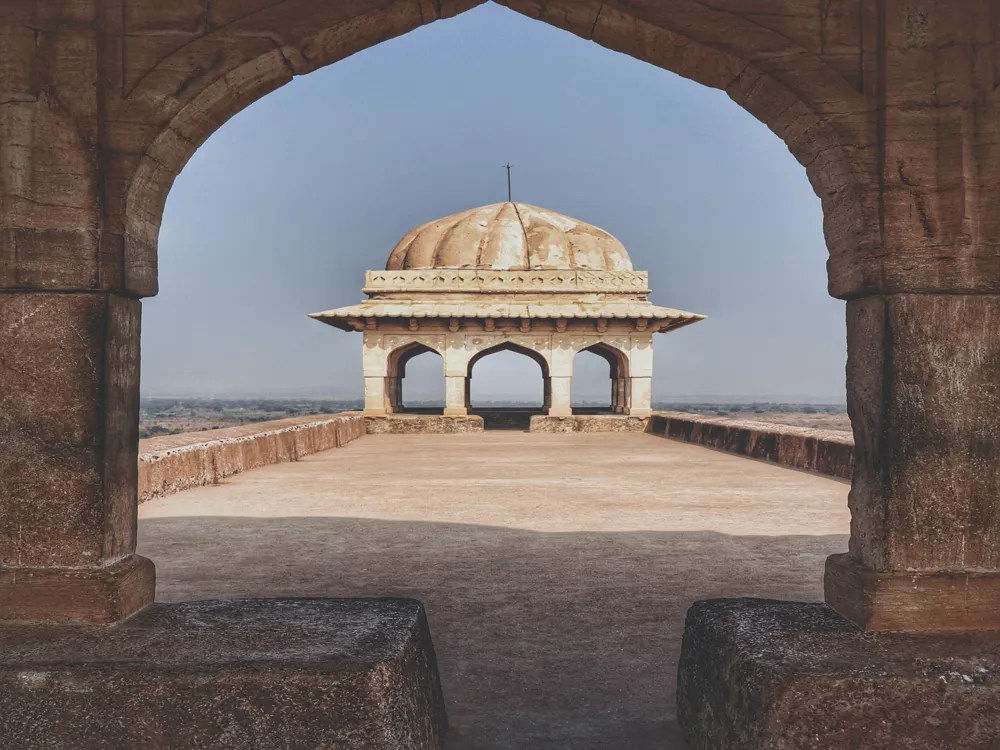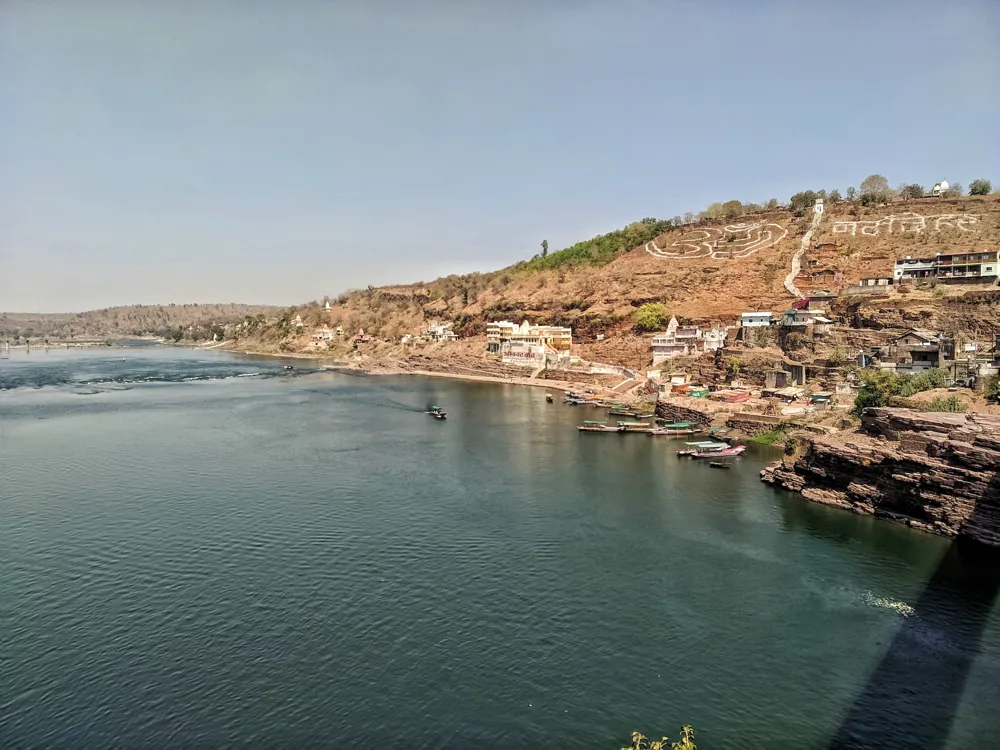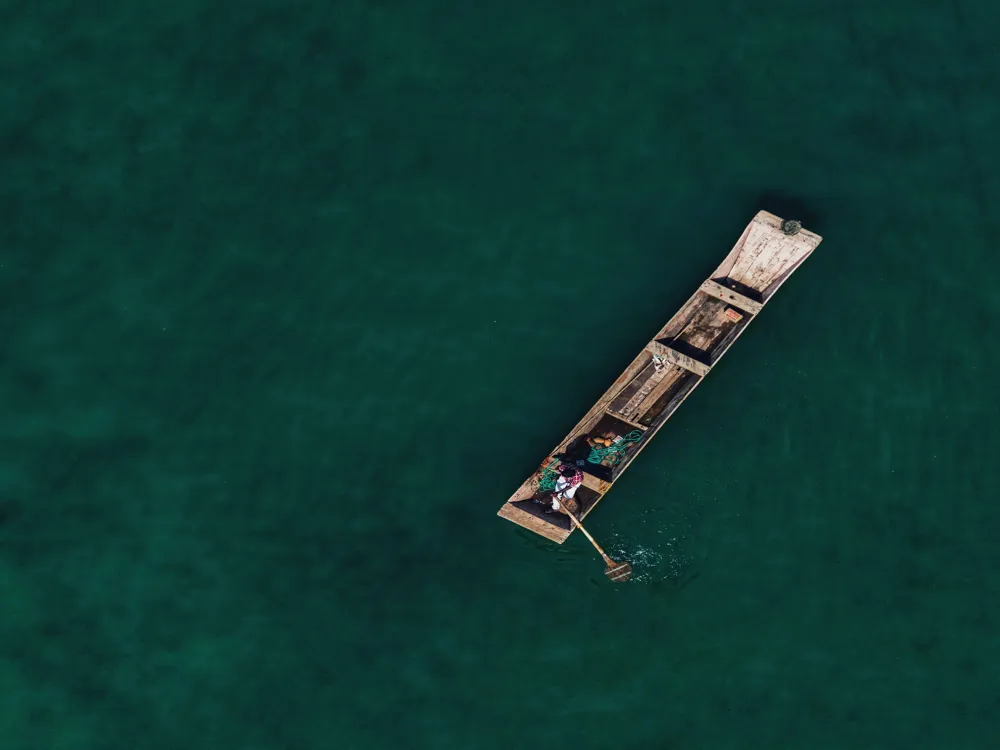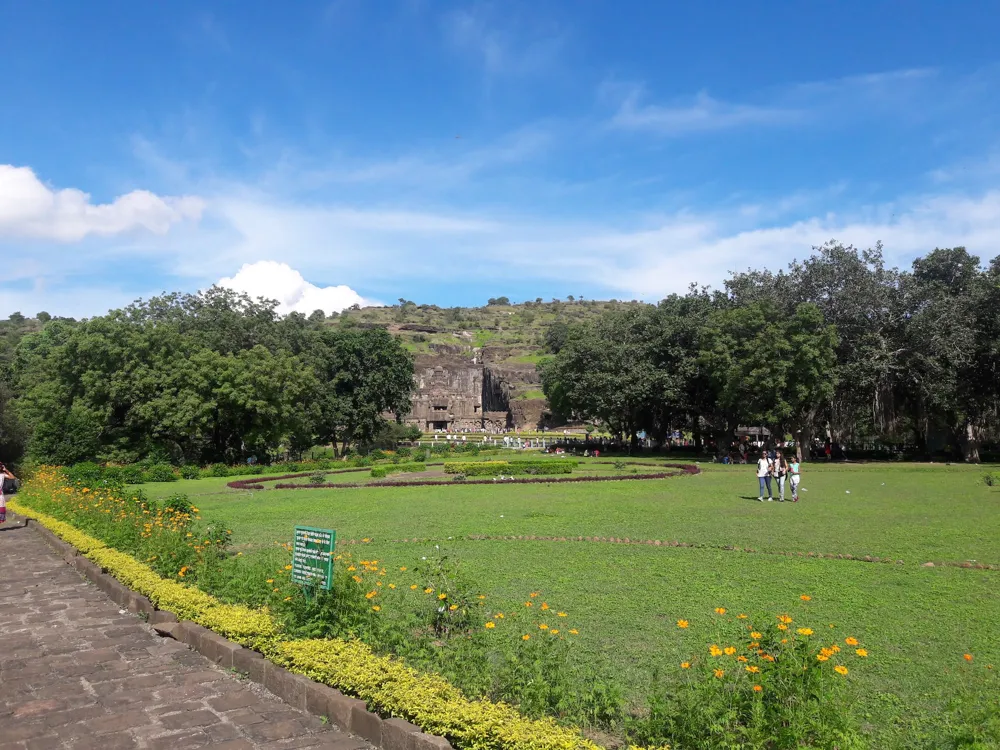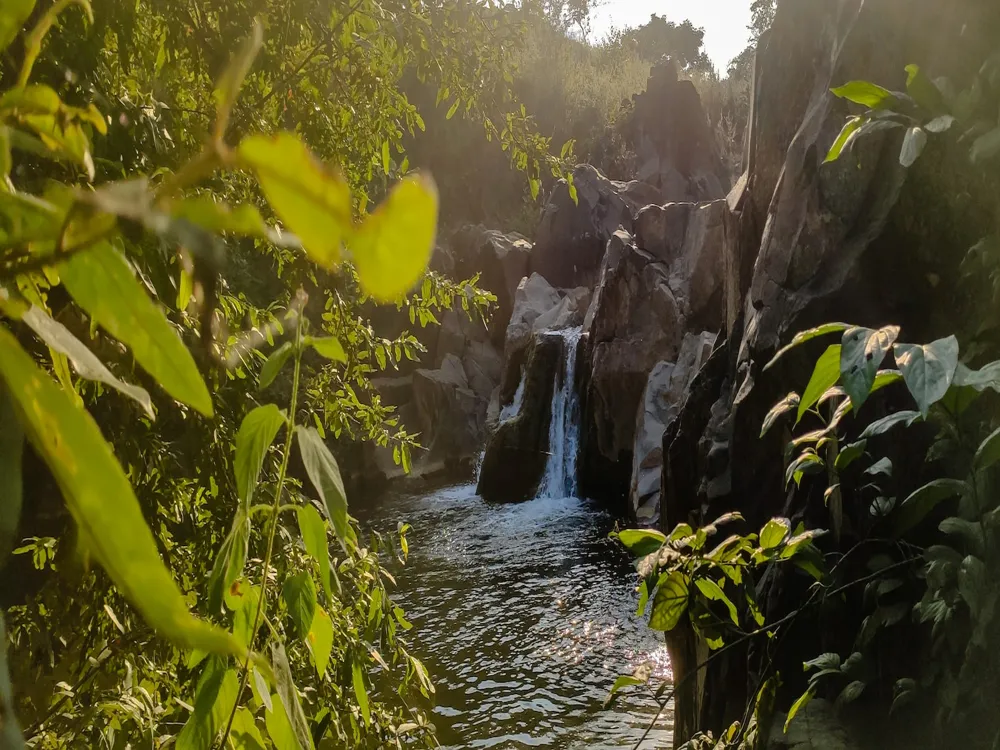Nestled in the quaint town of Mandu in the heart of Madhya Pradesh, the Jahaz Mahal, also known as the 'Ship Palace,' stands as a testament to India's rich historical and architectural heritage. This 15th-century structure, built under the reign of the Malwa Sultanate, mirrors the era's architectural ingenuity and the sultanate's luxurious lifestyle. Its unique ship-like structure, which appears to be sailing on the adjacent twin lakes of Munj Talao and Kapur Talao, is a marvel of medieval Indian architecture. Jahaz Mahal's design is a harmonious blend of Indo-Islamic architecture, reflecting the cultural amalgamation prevalent during the Malwa Sultanate period. The two-story structure, stretching over 120 meters in length, showcases a series of open pavilions, balconies, and terraces. Its long, narrow design and the placement between the lakes make it appear as a ship ready to sail, especially during the rainy season when the water levels rise. The palace is adorned with a plethora of architectural features that are both aesthetic and functional. The cisterns and water channels ingeniously integrated into the palace's design are a testament to the advanced water management systems of the time. The Jahaz Mahal also features a large swimming pool, known as the 'Talar-i-Begum,' which was used by the royal ladies. The pool's design, with its blue tiles and surrounding pavilions, adds to the palace's overall beauty and grandeur. The Jahaz Mahal is not only a marvel of architectural design but also a symbol of Mandu's golden age, reflecting the sultanate's prosperity and sophisticated lifestyle. Its location amidst the lush greenery of Mandu and the tranquil backdrop of the lakes makes it a picturesque site, attracting thousands of tourists and history enthusiasts every year. The palace's historical significance, coupled with its architectural splendor, makes it a must-visit destination for anyone exploring the rich tapestry of India's heritage. Jahaz Mahal's architecture is a remarkable example of the synthesis of Indo-Islamic styles prevalent in the 15th century in India. The structure's layout, construction techniques, and ornamentation reflect a blend of aesthetic sensibilities and practical ingenuity. The palace was designed not only to serve as a royal residence but also to be a visual spectacle, epitomizing the prowess and grandeur of the Malwa Sultanate. At the heart of Jahaz Mahal's architectural magnificence is its strategic positioning. Flanked by two lakes, the structure is built on a narrow strip of land, giving it the illusion of a ship floating on water. The palace's elongated, rectangular plan accentuates this effect, especially during the monsoon when the lakes swell. The reflective surfaces of the water bodies on either side create a stunning visual mirage, enhancing the ship-like appearance of the palace. The Jahaz Mahal is characterized by its high bastions at the corners, which resemble the prow and stern of a ship. The architectural fusion is evident in the ornamentation of the bastions and the main building, where one can see the interplay of Hindu and Islamic motifs. The use of arches, domes, and vaulted ceilings in the construction is indicative of Islamic influence, while the intricate jali work (latticed screen) and finely carved stonework bear the hallmark of traditional Indian craftsmanship. The interior of Jahaz Mahal is equally impressive, with several halls, rooms, and courtyards designed for specific purposes. The royal chambers, audience halls, and service areas are laid out in a manner that ensures both privacy and accessibility. The use of water in the palace's design is particularly noteworthy. Channels and cisterns are skillfully incorporated into the structure, serving both aesthetic and practical purposes. This integration of water bodies within the palace architecture not only provided a cooling effect in the arid climate but also symbolized the wealth and resourcefulness of the Sultanate. In summary, the architecture of Jahaz Mahal is a testament to the ingenuity of medieval Indian architects. It stands as an enduring symbol of the rich cultural and architectural heritage of India, reflecting the fusion of different styles and the sophisticated taste of the Malwa rulers. The ideal time to visit Jahaz Mahal is from October to March. During these months, the weather in Mandu is pleasant, making it comfortable for tourists to explore the palace and its surroundings. Opt for a guided tour to fully appreciate the historical significance and architectural details of Jahaz Mahal. Knowledgeable guides provide insights that enrich the visitor's experience. Dress comfortably and conservatively, considering the cultural norms and the typically warm climate of Mandu. Lightweight, breathable clothing is advisable. Jahaz Mahal offers numerous picturesque spots. Early morning and late afternoon light are ideal for photography, especially for capturing the palace against the backdrop of the lakes. Carry water with you, as exploring the expansive grounds of the palace can be tiring, especially in warm weather. Jahaz Mahal in Mandu is accessible by various modes of transportation. The nearest airport is in Indore, about 99 kilometers away. Visitors can hire taxis or take buses from Indore to reach Mandu. For those preferring to travel by train, the nearest railway station is in Ratlam, situated 124 kilometers from Mandu. Regular bus services and taxis connect Ratlam to Mandu. Additionally, Mandu is well-connected by road to major cities in Madhya Pradesh and surrounding states, making it easily accessible for those traveling by car. Read moreOverview of Jahaz Mahal in Mandu, Madhya Pradesh
Architecture of Jahaz Mahal
Tips for Visiting Jahaz Mahal
Best Time to Visit
Guided Tours
Dress Appropriately
Photography Tips
Stay Hydrated
How To Reach Jahaz Mahal
Mandu Tourism
Best Time to Visit Mandu
How to Reach Mandu
Things To Do Mandu
Jahaz Mahal
Mandu
Madhya Pradesh
NaN onwards
View mandu Packages
Weather :
Label : Must Visit
Tags : Forts & Palaces
Timings : 6:00 AM - 7:00 PM
Time Required : 1 - 2 hours
Entry Fee : India Tourist: INR 5
Foreigner: INR 100
Video Camera: INR 25
Planning a Trip? Ask Your Question
Mandu Travel Packages
View All Packages For Mandu
Top Hotel Collections for Mandu

Private Pool

Luxury Hotels

5-Star Hotels

Pet Friendly
Top Hotels Near Mandu
Other Top Ranking Places In Mandu
View All Places To Visit In mandu
View mandu Packages
Weather :
Label : Must Visit
Tags : Forts & Palaces
Timings : 6:00 AM - 7:00 PM
Time Required : 1 - 2 hours
Entry Fee : India Tourist: INR 5
Foreigner: INR 100
Video Camera: INR 25
Planning a Trip? Ask Your Question
Mandu Travel Packages
View All Packages For Mandu
Top Hotel Collections for Mandu

Private Pool

Luxury Hotels

5-Star Hotels

Pet Friendly








